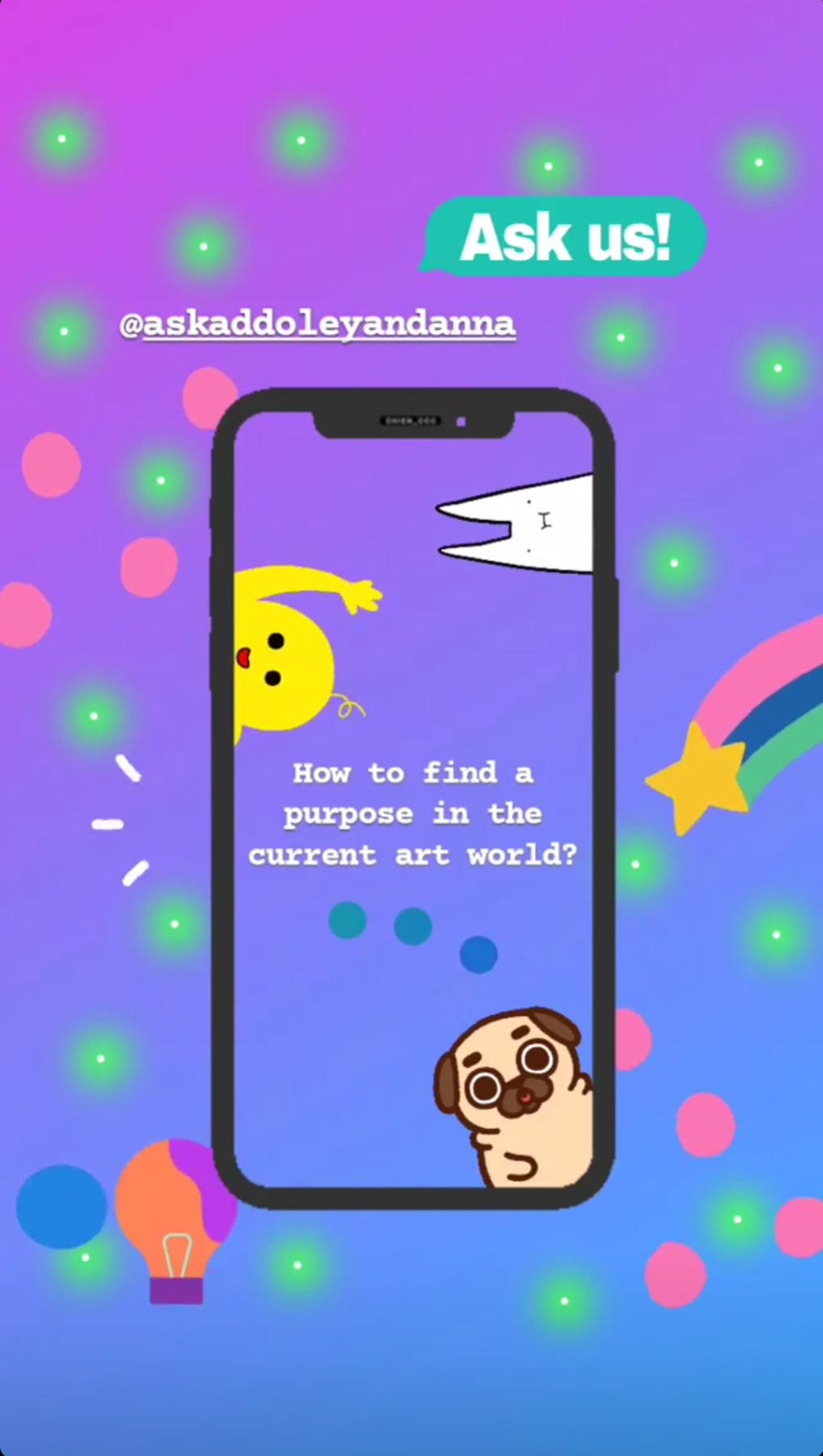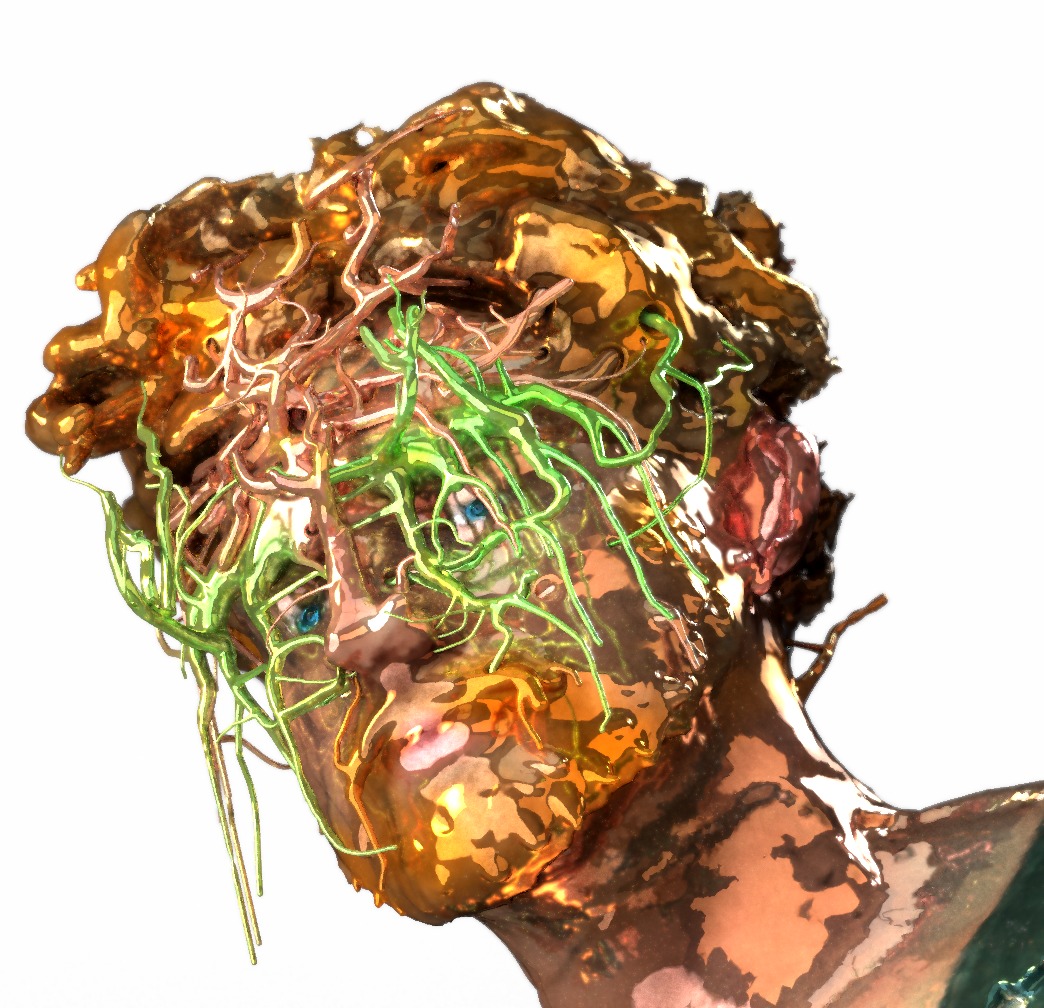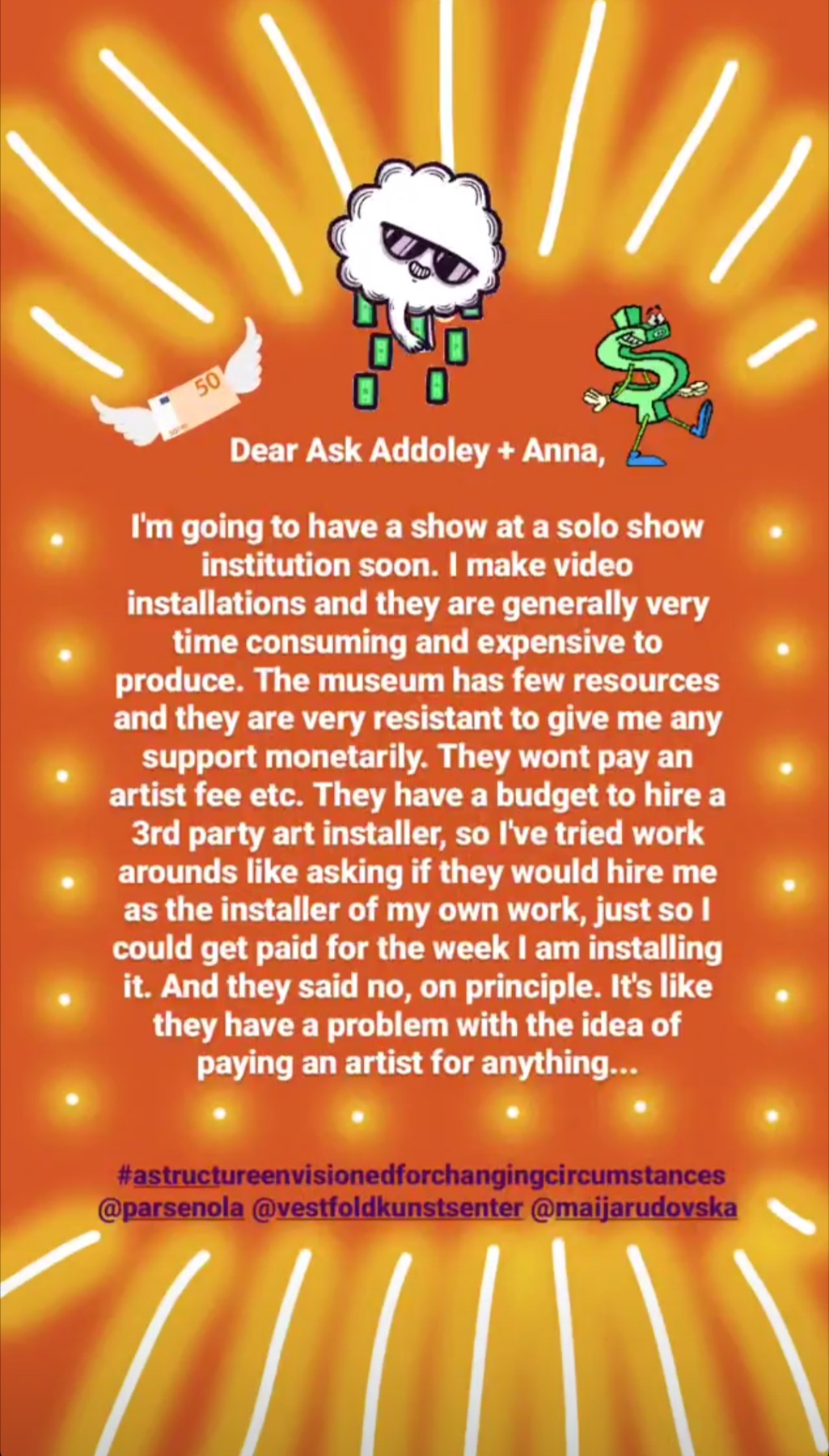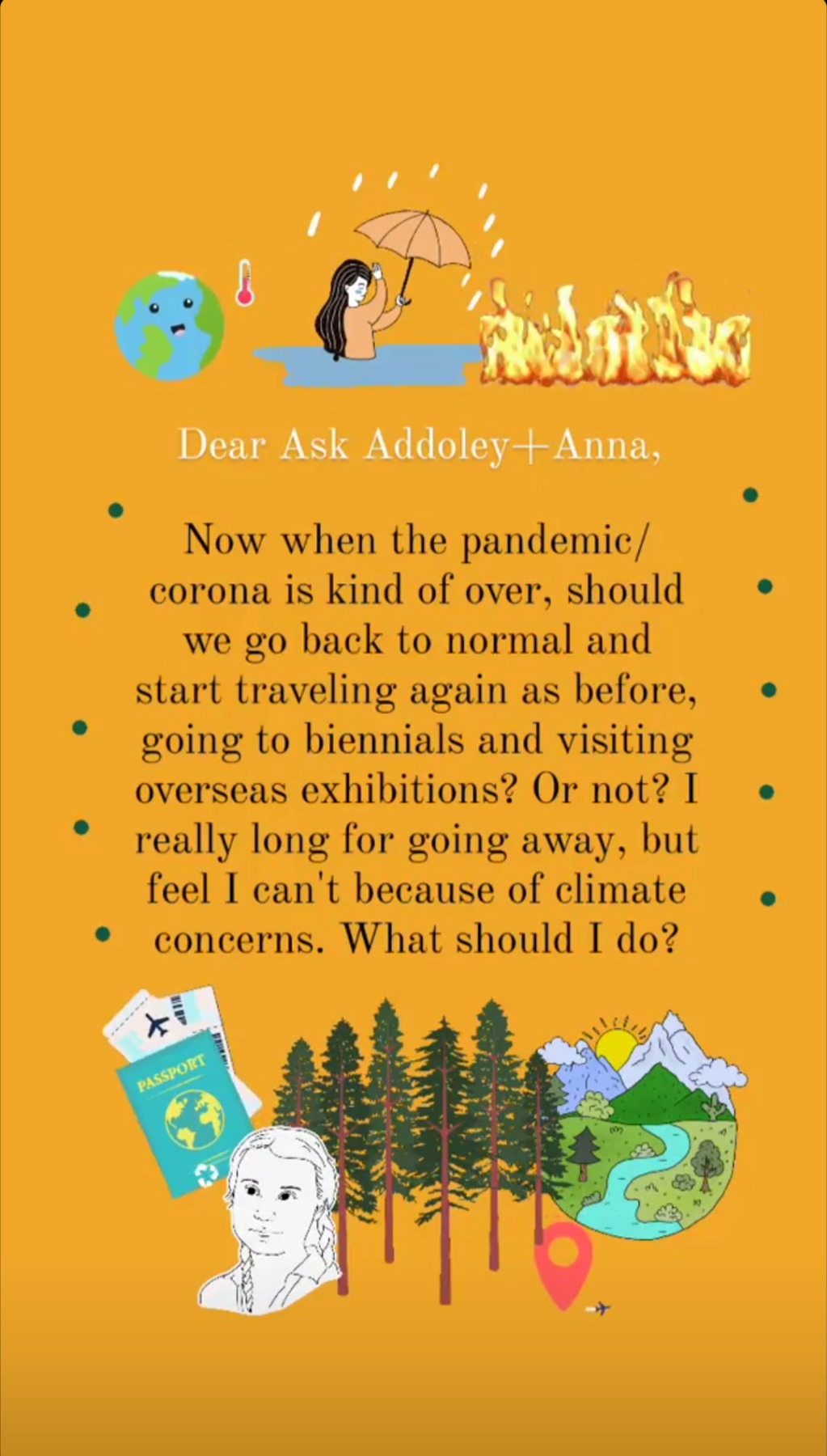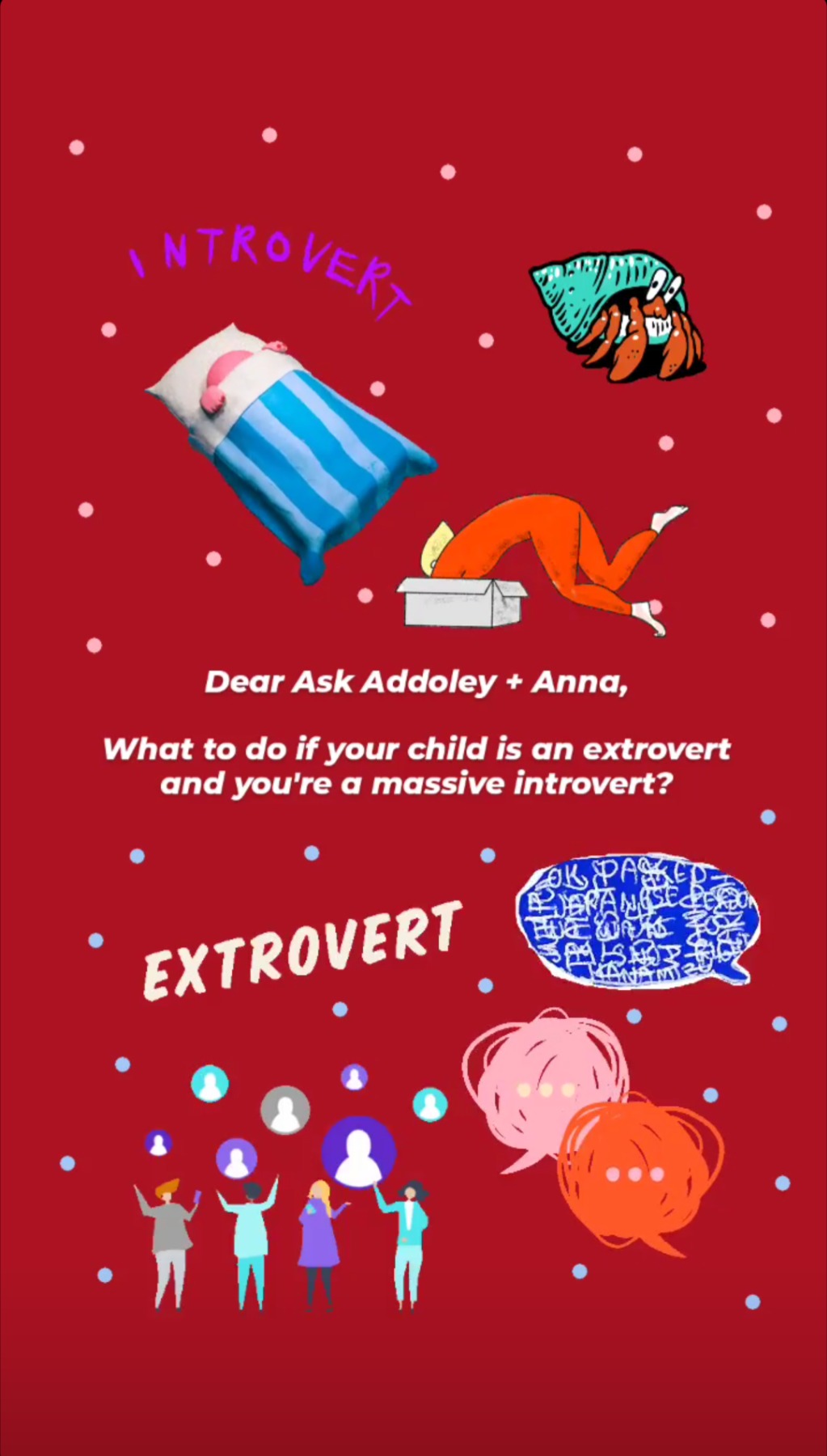
I’ve always been concerned with the state of uncertainty
Q&A with Maija Rudovska, curator of the project “A Structure Envisioned for Changing Circumstances”
“A Structure Envisioned for Changing Circumstances” is a collaborative project between Blind Carbon Copy (Riga, Latvia), PARSE NOLA (New Orleans, Louisiana), Vestfold Art Center (Tønsberg, Norway) and Kongsberg Kunstforening (Kongsberg, Norway). The series of various artist contributions are on view online starting from December 2021 till February 2022, on the web platform www.ASEFCC.org and the Instagram account @structure.envisioned.
You are the main person behind the project “A Structure Envisioned for Changing Circumstances”, which launched at the end of November. Could you tell me how the idea for it came about, and what the project’s focus and main conceptual guidelines are? How did you choose the six involved artists whose works are on view now?
The origins of the project go back to autumn 2019, when I was hosted by the New Orleans-based art programme PARSE NOLA for a month-long residency, which was, in turn, supported by a CEC Artslink Fellowship. I was hugely inspired by the experience in New Orleans, where I conducted many studio visits and developed close ties to several artist-run spaces, especially PARSE NOLA, which is run by the independent curator Amy Mackie. Amy and I decided to develop a project that would provide an exchange programme between artists from New Orleans and Latvia. We titled it “A Structure Envisioned for Changing Circumstances” (ASEFCC). Then Covid-19 arrived and we realized that the real-life exchanges in the form of residencies (which is how it was initially planned) should be postponed, and so we came up with an online programme as the first phase of the project. As I’ve been always concerned with the state of uncertainty, I had begun my research for the project with the following query directed at artists: “How can we find space for expression and creation in a world of changing circumstances”? I had come up with this prior to the pandemic, and now it relays an overwhelmingly apt sentiment. These issues are not only characteristic of certain places but are a global condition for many people working in the arts. Much like Riga, New Orleans has few resources for the art world and its workers. New Orleans is also a disappearing city, one that is becoming increasingly vulnerable in view of climate change.
For example, New Orleans-based artists Cristina Molina and Dave Greber reveal these issues beautifully within the project. The Norwegian partnership, particularly with curator Tina Rigby Hanssen, who works at the Vestfold Art Center in Tønsberg, joined the project at a later stage. It reiterated my ongoing interest in developing partnerships between Baltic and Scandinavian institutions, and in relation to which I selected the artists Anna Ihle (who works on a podcast with American artist Addoley Dzegede) and Kjetil Detroit Kristensen, whose practices represent the struggle to find sustainable structures within the art-realm. From the Latvian side, the project is represented by Līga Spunde.
Līga Spunde. “Episodes about not knowing how it will be”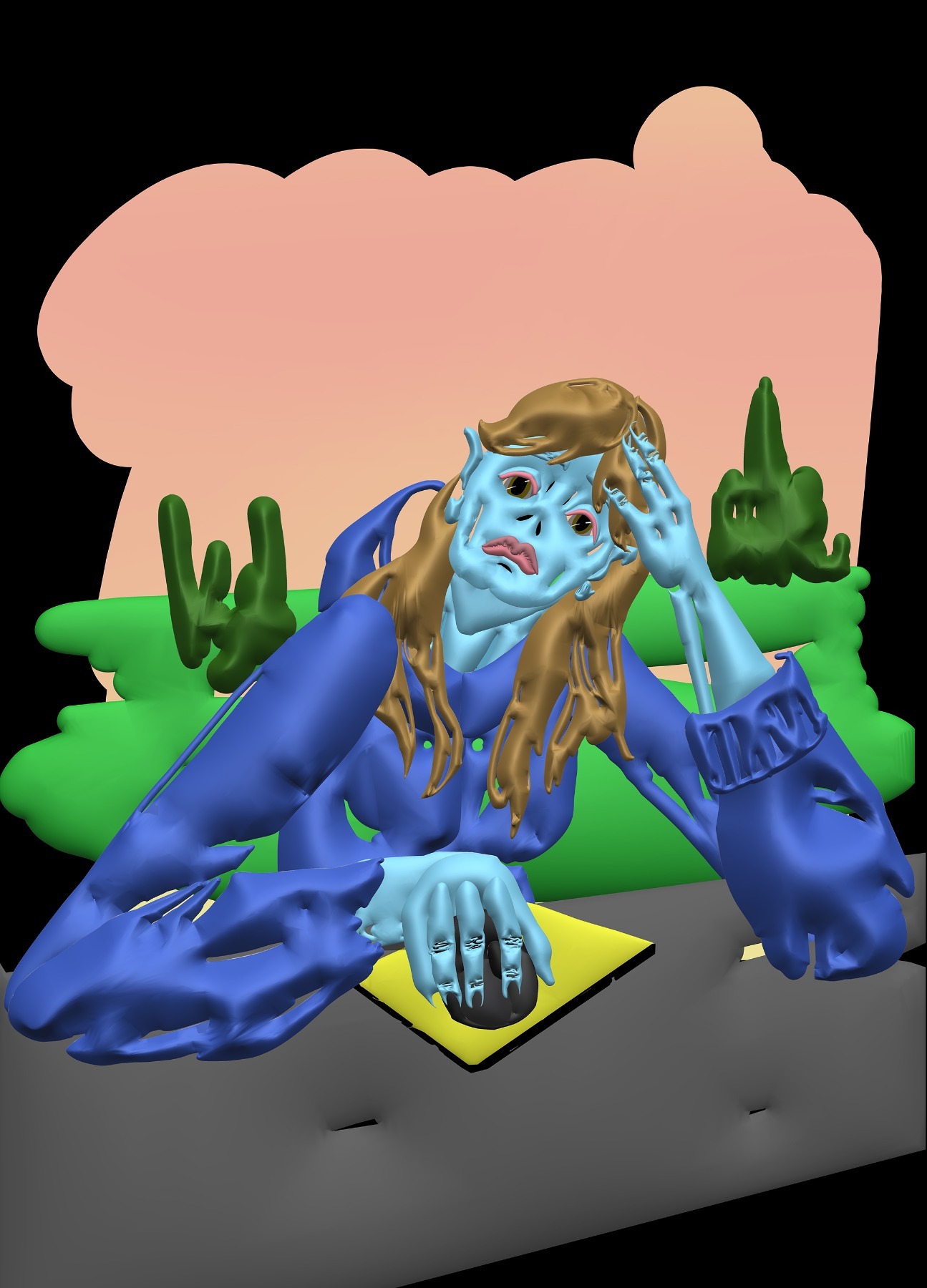
The project’s programme is ongoing throughout February. Could you highlight the most important events/talks, etc. that will take place?
During December the main centre of attention is the advice podcast “A Different World”, which consists of four episodes hosted by Addoley Dzegede and Anna Ihle. It’s the fourth season of the show, and in this one they’ve invited as guest advisors artists from the Baltics and New Orleans – Ash David Kerr, Inga Meldere, Cristina Molina, Dave Greber, Airi Triisberg, Kasparas Groševs, Amy Mackie and myself. The main idea behind the podcast is that we the artists become the main advisors/experts on the issues that our peers are dealing with, answering questions about money, parenting, partnerships, art careers, reimbursement, etc.
Anna Ihle, Addoley Dzegede, Dave Greber, Cristina Molina
In mid-December the video work “Casebearer 1.0” by Cristina Molina and Dave Greber will be presented as well. It takes inspiration from the bagworm/casebearer moth species, a model example of a resourceful nomad that can acclimate itself to any given situation. At the beginning of January, Kjetil Detroit Kristensen’s new piece “If You Do Not Love Me, I Shall Not Be Loved” will see the light. The artist chose to work with an old archive from the Polar Institute, playing with the imagery of an expedition that took place in the far North. Kristensen has chosen the polar bear as the alter ego of the artist, the animal taking on the role of a lost figure that is affected by climate change, chaos, depression and many other effects of the pandemic and today’s world. At the end of January, Līga Spunde’s work “Episodes about not knowing how it will be” will be presented as an online exhibition in the form of a visual contemplation on changing circumstances and trying to define the emotions behind them.
Work by Cristina Molina
Work by Dave Greber
All artworks have been created specially for this project during 2021, and are available for listening/viewing either on the project’s website www.asefcc.org/ (designed by Dave Greber) or Instagram account @structure.envisioned. News about the launches of the artworks will also be found on these pages.
The instability and unpredictability of life due to a pandemic are clearly present within the concept of “A Structure Envisioned for Changing Circumstances”, but at the same time, these two terms have always been a part of an artist’s life. Could it be said that because of this fact, artists have been the best-prepared part of society for the current circumstances, and are therefore capable of helping society live through this kind of situation?
Indeed, artists have always been equipped to deal with instability and precariousness, yet the question is, should it be that way? It’s almost the same as asking – should a poor person stay poor because it provides an existential experience? The answer is – of course not. In my opinion, art has always been greatly exploited by the more privileged groups who have been in possession of more resources, financial or other, and who have had access to the best appearances of art and cultural processes. Today, artists are part of the capitalist system we live in. I think artists and the art world have suffered from the pandemic as much as everyone else – maybe even more – because these past one and a half years have escalated to an even higher degree the fear that “it never becomes better”; many artists within ASEFCC reveal this feeling. Maybe the good thing is that people become more aware of the necessity to have art in their lives – its healing role (which has always been there). I think artists themselves also admit that, for them, creation is something that they inevitably do because it helps them survive hardships. Actually, I think that everyone who lives in a precarious place secretly wishes that their lives would get better, at least at some point. That’s why, in my opinion, art shouldn’t be expected to carry the heavy burden of healing a society and systems that are already broken; maybe that’s the reason why art has retreated recently. You don’t see much strong art coming out now.
This project is located online. In fact, one of the topics specially listed as being covered in the project’s programme is the capability of online projects reaching a wider audience. What’s your personal opinion regarding that? Do you believe that online art works are as successfully experienced as art that is experienced face to face?
During the past one and a half years of living with Covid-19, many of us artists and art professionals have considered various strategies for conducting art projects online, as well as engaging with and experiencing art online, due to the restrictions that have been enacted in real life. In my opinion, the Internet and/or digital space is just another realm in which art lives (for example, the recent emergence of NFT art, previously Post-Internet art, etc.). Contemporary art has been created and distributed online for almost three decades now – it’s nothing new. With the appearance of Covid-19, many players in the art world, especially organizations, have had to reevaluate how they engage with their audiences online. Many have realized that it’s actually still a very unexplored place with many possibilities. I remember as the Covid-19 lockdowns began, I followed institutions with great curiosity as I wanted to see what they would offer online. There were very few that could adjust to the new situation and be creative and appealing. As this relates to my project “ASEFCC”, I immediately understood that bringing part of the project online would provide an opportunity for audiences from different locations across the world to connect with one another, which is something that would not be possible in real life. However, the project will have a second phase – residency exchanges between New Orleans and Latvia that will take place next year, in 2022, indicating that the project doesn’t have just one single focus of exploring online space but will also engage with irl*.
We used to speak about pandemics mainly from a negative point of view, but what lessons has this current pandemic taught the art world? Is there even something that could be called a positive impact resulting from all these troubles?
I think it’s too early to say what exactly has been positive and negative, as experiences vary and are very subjective. In my own life, the reduction in travelling has been a positive aspect as it has given me more focused time during which I can set up my priorities regarding work and life dynamics. Whereas for other people, the restrictions that the pandemic brought limited their access to certain resources – exhibitions/art projects were postponed or cancelled, and the way in which we were used to working rapidly changed; it’s obvious that we will live in this state for a while. For many, these changing circumstances are hard to deal with. There’s a lingering uncertainty that everyone has had to accept.
This project is a cooperation between Nordic and Baltic countries and the USA. Cooperation across countries and being part of an international team is very characteristic of you. Do you believe that it’s possible to create more meaningful art events in such a way? And what is the role of networks in today’s art world?
Setting up an international collaboration for an art project is definitely something that I choose over working with a local art scene. A meaningful way of working doesn’t depend on location and/or how local or international your work is. It’s purely a choice. I like to explore and engage with new territories, both literally and abstractly. I also love cooperating with people who operate cross-culturally and are open to sharing their knowledge and experience beyond the limits of their origins and/or base. I’ve been working internationally for the last ten-plus years, and I don’t plan to give it up any time soon – in fact, I want to add additional layers. I also believe that collaborations between different regions, cultures, nationalities, etc. can enrich one’s life; it’s especially important for artists to get involved in a culture of exchange and networking – it helps them to strengthen their voices and collect opportunities for their artistic practices. A networking economy is still crucial for artistic practice, and as long as we’re living in an age of globalization, it’s not going to go away.
What is the task of the curator today? How has the work of curators changed during the last one and a half years?
Although the curatorial profession is still very young, curators have the privilege to choose how, where and with whom they work. For example, for an emerging curator, it’s a rather big arena in which they can test out their abilities and experiment with styles and working methods. Whether you stick with an institution(s), work in the art market, do research or become an independent curator, there is always someplace where you can dig in and develop your voice. During the last one and a half years, in my opinion, the main issues have been developing a certain flexibility to work outside your comfort zone and the exploration of new formats, especially in the digital realm. Regarding the latter, curators are still working quite rigidly in that space. I haven’t seen anything super exciting so far. The most interesting stuff comes out when there’s an intersection between artistic practice and curation, or maybe even other fields.
*irl – in real life
